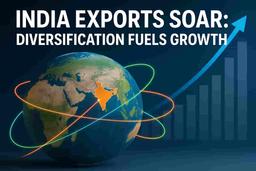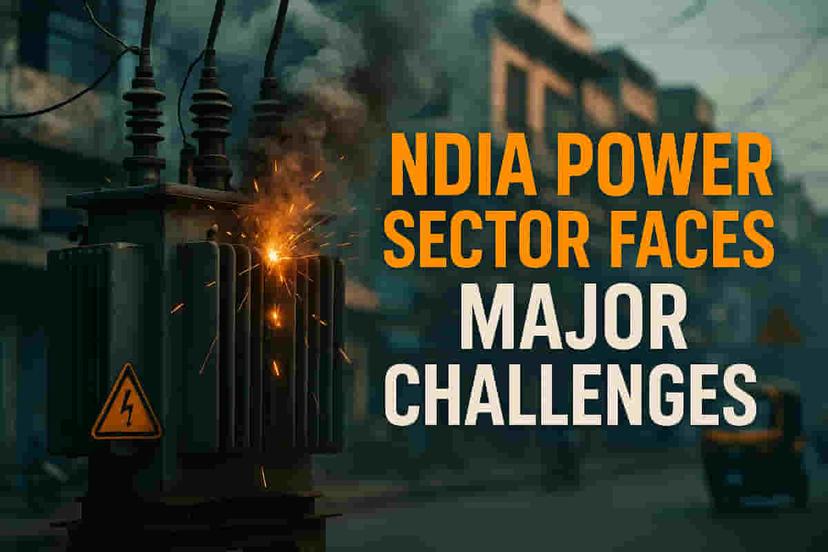India-US Trade Deal Nears Completion: Focus on Tariff Resolution
Overview
The first phase of the India-US bilateral trade agreement is nearing completion, primarily aiming to resolve the 50% reciprocal tariffs imposed on Indian goods and seeking market access for US products. India insists that a separate 25% penalty tariff, imposed due to oil purchases from Russia, must also be rolled back in this initial phase. Both countries are working towards a final announcement.
The initial tranche of the India-US bilateral trade agreement (BTA) is reportedly close to finalization, with official sources indicating its primary focus is on addressing the significant 50% reciprocal tariffs affecting Indian goods. This first phase will also facilitate market access for specific American products within India. Following the resolution of these reciprocal tariffs, both nations plan to move to subsequent tranches to discuss broader trade aspects, including further market access for both sides.
New Delhi's primary objective is to have the entire 50% US tariffs, which were implemented in August, fully addressed. This includes a 25% reciprocal tariff and an additional 25% penalty tariff that was imposed on India for its continued oil purchases from Russia. India argues that a trade deal would be meaningless if only half of the tariffs are resolved, as it would render Indian goods uncompetitive.
US President Donald Trump's administration has linked the reduction of these penalty tariffs to India ceasing oil purchases from Russia, alleging that Russia uses oil revenues to fund its war in Ukraine. However, India contends that it is unfairly singled out, as many other nations continue to buy Russian oil, and India is not violating any explicit restrictions. Another source highlighted that the 25% penalty tariff was imposed unilaterally without prior discussion and expects its full rollback.
There is an expectation that India's reduced oil purchases from Russia, following US sanctions on Russian oil companies like Rosneft and Lukoil, might be viewed positively by the US administration. However, India has no intention of committing to halt its oil imports from Russia. The recent one-year contract signed by Indian Public Sector Undertaking (PSU) oil companies to import approximately 2.2 million tonnes of Liquefied Petroleum Gas (LPG) from the US in 2026 could also potentially ease negotiations.
India's exports to the US, its largest export market, have seen a contraction for two consecutive months (September and October) following the imposition of the 50% duties. The government remains hopeful that the recent withdrawal of reciprocal duties by the US on various agricultural products, such as spices, processed foods, tea, and coffee, will help create a level playing field for Indian exports worth $1 billion.
While substantial progress has been made, the exact timeline for the finalization and announcement of the first tranche of the India-US BTA remains uncertain, though it is expected to be a joint announcement once concluded.
Impact
This trade deal has the potential to significantly boost India's exports by removing tariffs, thereby improving the competitiveness of Indian goods in the US market. It could also lead to increased market access for US goods in India. The resolution of penalty tariffs related to Russian oil could ease geopolitical pressures on India and improve its trade balance. A positive outcome could signal improved economic ties and potentially encourage further investment. Rating: 7/10
Difficult Terms:
Bilateral Trade Agreement (BTA): An agreement covering trade relations between two countries.
Reciprocal Tariffs: Taxes imposed by one country on another's goods in response to similar taxes imposed by that other country.
Penalty Tariffs: Additional taxes imposed as a punishment, often for specific actions or policies.
Market Access: The ability for foreign companies to sell their goods and services in a particular country.
Public Sector Undertaking (PSU): A government-owned corporation.
Liquefied Petroleum Gas (LPG): A flammable hydrocarbon gas mixture, liquefied for storage and transport, commonly used as fuel.
Real Estate Sector

Jaguar Land Rover Expands Bengaluru Operations With 1.46 Lakh Sq Ft Office Lease

Puravankara Ltd Leases Prime Bengaluru Retail Space to IKEA India

India Housing Market Shows First Signs of Cooling, Empowering Homebuyers

Smartworks Coworking Secures Major Pune Lease with Wolters Kluwer, Eyes Enterprise Growth

Indian Real Estate: Air Pollution Shift Drives Affluent Buyers Towards Healthier, Cleaner Investments
Industrial Goods/Services Sector

WPIL Limited Secures ₹426 Crore South African Water Project Contract

Exide Industries: Lithium-Ion Cell Production Target Set for FY'26, EV Battery Market Push Intensifies

India's Electronics Sector Needs Scale and Design: PLI Scheme Boosted, But Experts Urge Deeper Capabilities

Power Sector Woes: India's 1.3 Million Transformer Failures Under Government Scrutiny

India's Engineering Exports Target $250 Billion by 2030 via Global Market Diversification












